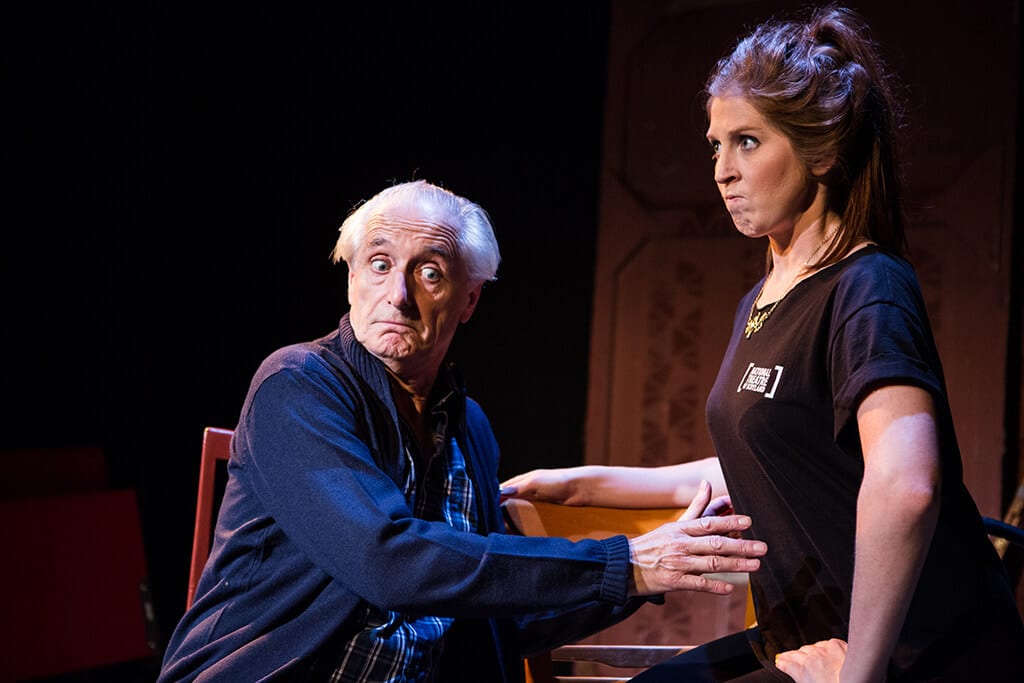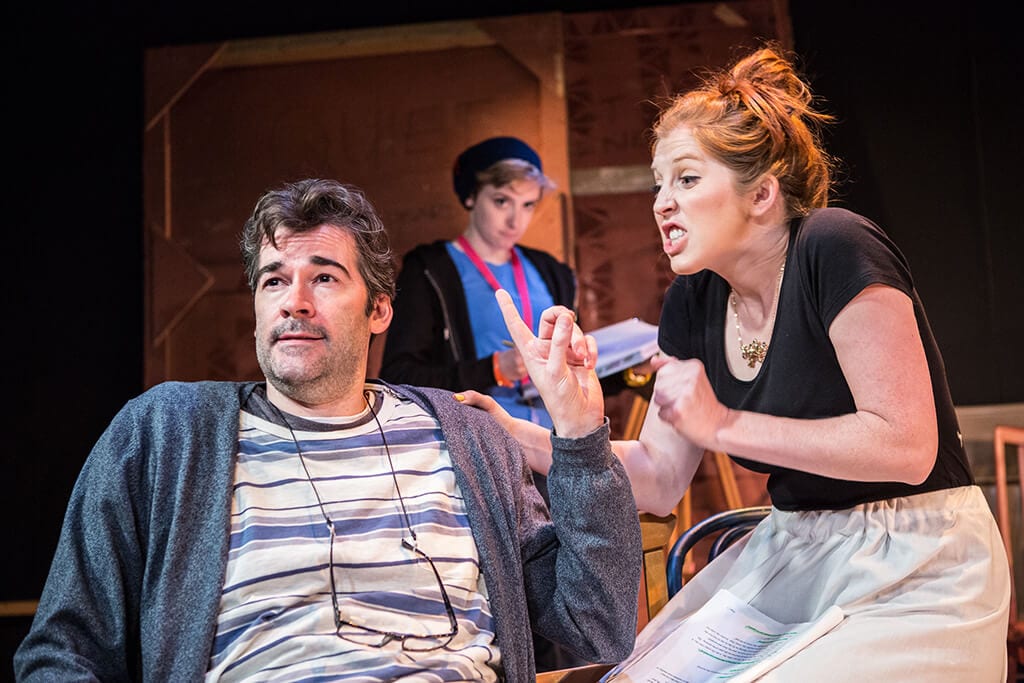So what are we doing? It is an honest enough question, posed by one of the more senile characters in a moment unadulterated rationality: and it will never be answered, not by the cast, nor the audience, nor even the script itself, although the doomed play’s director Evelyn (Ben Starr) would insist that it has been written in the lines somewhere.
In a nutshell, Stop! – The Play – which seems to take comedic cues from The Producers –becomes the story of five actors in search of a tangible storyline. It pirouettes across the stage with a script hastily hidden under the appellation “art”, forgets its lines and screams in melodramatic monologues, threatens to walk out and, stumbling, face plants the unsuspecting lap of an audience member. The entrance of each character is “like a swan landing on his favorite millpond” as every actor appears more than just familiar with the happenings in production of a terrible play, and delighted to make a mockery of it. Each character-actor knows how to work the room acoustics as well: our attention is demanded on all sides, as Walter (James Woolley) wanders around the stage spouting almost sidewalk soliloquies, Kryston (Tosin Cole) plugging sideline commentary from center stage, Gemma (Hatty Preston) in the wings cooing over a rented stage monkey, Hugh (Adam Riches) and Evelyn (Ben Starr) erupting into arguments with sarcastic interjections from Linda (Hannah Stokely).
With the first act set in a rehearsal studio, and the second act the flop of a play itself, the building action necessitates inaction: each time a problem appears, or a character announces a grievance, the play is rewritten. The plot becomes a spiraling staircase of ideas, with character-actors like Gemma insisting the script is evolving upwards, and others like Hugh feeling dragged downwards. And even though the scriptwriter never physically appears to harness the hydra-play, we can still feel that his character must have some unholy masochistic tendencies or predisposition towards the neurotic, as no sane person would persecute his characters with an unrelenting maelstrom of rewritten scripts. The character-actors are bandied about, “ragdolls in a tumble dryer” spiraling in tandem with their roles in the play: the teacher-destined-artist becomes the homosexual owner, the mundane housewife is thrust into the limelight as art manifested, the art critic is modified to a snooping journalist, the black American man transforms into a white English woman.
Yet even though the characters are hallmarks of the theatre industry to the point of pinning their own epithets to their headshots (Mr. Hollywood, the Egomaniac, the Stage Monkey etc.) their predictability is far from tedious: rather, it is testament to the strength of the writing itself. Cleverly blurring the already hazy line between reality and fiction, the play that goes wrong but must go on, is an immersive experience, fraught with comedy and witty line after line delivered at a pace fit to reduce an audience member to tears from laughter, and pain their stomach from breathlessness like a poison.
The entirety of the set mimics the creative process and the almost pregnancy of a writing and producing a play, yet comically so: the desk of the first act is scattered with paintbrushes, an army of colored tapes, plastering of headshots and costume designs, a football that is about as much use as the first several rewrites of the script, and a first aid kit (as though symbolic of the mental stress each character will endure in order to entertain the audience). The set for the second act is as purposefully hastily thrown together as a father-to-be’s preparedness for a child.
The play within a play within a play stands almost as reflective as a Banksy painting of a man, spray-painting a man, spray-painting a man, spray-painting a painting of a man spray-painting: the art either flutters like a butterfly, or dies like a butterfly trapped in a jar. You simply cannot watch this play for art or a moral lesson, as it only exists in self-fabrication. Simultaneously, every character-actor is critical to the momentum of the humor: even the simplest of action – like Chrissie (Charlie Cameron) remarking the set with stage directions for each new script – is entirely necessary for the comedy (“as unflappable as a dead swan”) of the play to go on. Summarily, the play about a play that goes wrong unintentionally is a play that gets everything right. The only thing that could possibly make it better is for an actual monkey to be cast – provided it doesn’t wank on the PlayStation of a certain actor’s boyfriend. With all that in mind…Stop! – and go see this play.



